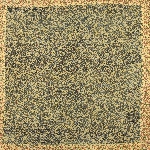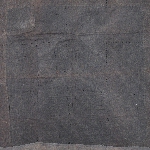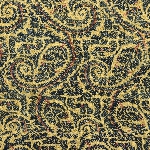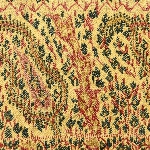| Object Number | 43-12-81 |
| Current Location | Collections Storage |
| Culture | Indian |
| Provenience | India | Kashmir |
| Period | 19th Century |
| Date Made | 19th Century |
| Section | Asian |
| Materials | Wool | Cotton |
| Technique | Tapestry Weave | Dyed | Sewn |
| Iconography | Floral | Buta | Boteh |
| Description | Wool. White with stylized floral design. Predominantly blue, a little red and yellow. Border red with a little blue and yellow. Backed with sheer blue cotton. The weave structure is 2/2 weft-faced twill tapestry weave with double interlocking joints. The piece has been sewn together in many small sections, including the daur/dor/dhor (Arabic) which has not been woven (with resolved corners) but instead sewn together. Some sewn areas are less noticeable, probably exectuted by rafugars (embroiderers). However, little care has been taken to align the field design, which is visibly disjointed. Additional sewing seems to have been done at the time that the backing was attached and is much more visible, in black running stitch. Appears to be pieced together from moon shawl (chand-dar) fragments, as the matan (central field) design reflects a style that was popular on moon shawls from the 1820s-'40s. The inclusion of the plum color is rather sporadic and the drawing is dense, but blocky. That the field design is not oriented towards the center also suggests that it was not woven in the style of the sqaure shawls that followed moon shawls. |
| Length | 165.1 cm |
| Width | 121.92 cm |
| Credit Line | Bequest of Mrs. Frances E. (Harry) Markoe, 1943 |
Report problems and issues to digitalmedia@pennmuseum.org.






